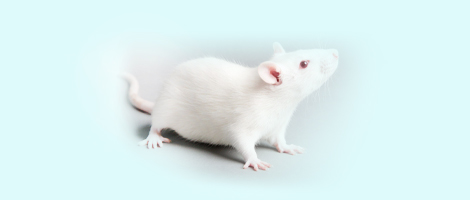| 1 |
CHO N H, SHAW J E, KARURANGA S, et al. IDF Diabetes Atlas: global estimates of diabetes prevalence for 2017 and projections for 2045[J]. Diabetes Res Clin Pract, 2018, 138:271-281. DOI: 10.1016/j.diabres.2018.02.023 .
|
| 2 |
HAY M, THOMAS D W, CRAIGHEAD J L, et al. Clinical development success rates for investigational drugs[J]. Nat Biotechnol, 2014, 32(1):40-51. DOI: 10.1038/nbt.2786 .
|
| 3 |
TURK J R, HENDERSON K K, VANVICKLE G D, et al. Arterial endothelial function in a porcine model of early stage atherosclerotic vascular disease[J]. Int J Exp Pathol, 2005, 86(5):335-345. DOI: 10.1111/j.0959-9673.2005.00446.x .
|
| 4 |
YAN S, TU Z C, LIU Z M, et al. A huntingtin knockin pig model recapitulates features of selective neurodegeneration in Huntington's disease[J]. Cell, 2018, 173(4):989-1002.e13. DOI: 10.1016/j.cell.2018.03.005 .
|
| 5 |
CHEN J, ZENG W, PAN W, et al. Symptoms of systemic lupus erythematosus are diagnosed in leptin transgenic pigs[J]. PLoS Biol, 2018, 16(8): e2005354. DOI: 10.1371/journal.pbio. 2005354 .
|
| 6 |
American Diabetes Association Professional Practice Committee. 2. Diagnosis and Classification of Diabetes: Standards of Care in Diabetes-2024[J]. Diabetes Care, 2024, 47(Suppl 1):S20-S42. DOI: 10.2337/dc24-S002.
|
| 7 |
LENZEN S. The mechanisms of alloxan- and streptozotocin-induced diabetes[J]. Diabetologia, 2008, 51(2):216-226. DOI: 10.1007/s00125-007-0886-7 .
|
| 8 |
RENNER S, DOBENECKER B, BLUTKE A, et al. Comparative aspects of rodent and nonrodent animal models for mechanistic and translational diabetes research[J]. Theriogenology, 2016, 86(1):406-421. DOI: 10.1016/j.theriogenology. 2016.04.055 .
|
| 9 |
XU Z Y, CHEN W T, WANG L Y, et al. UCP1 knockin induces lipid dynamics and transcriptional programs in the skeletal muscles of pigs[J]. Front Cell Dev Biol, 2021, 9:808095. DOI: 10.3389/fcell.2021.808095 .
|
| 10 |
KOTTAISAMY C P D, RAJ D S, PRASANTH KUMAR V, et al. Experimental animal models for diabetes and its related complications-a review[J]. Lab Anim Res, 2021, 37(1):23. DOI: 10.1186/s42826-021-00101-4 .
|
| 11 |
HEINKE S, LUDWIG B, SCHUBERT U, et al. Diabetes induction by total pancreatectomy in minipigs with simultaneous splenectomy: a feasible approach for advanced diabetes research[J]. Xenotransplantation, 2016, 23(5):405-413. DOI: 10.1111/xen.12255 .
|
| 12 |
SOUTO G, DONAPETRY C, CALVIÑO J, et al. Metabolic acidosis-induced insulin resistance and cardiovascular risk[J]. Metab Syndr Relat Disord, 2011, 9(4):247-253. DOI: 10.1089/met.2010.0108 .
|
| 13 |
GIHA H A. Hidden chronic metabolic acidosis of diabetes type 2 (CMAD): clues, causes and consequences[J]. Rev Endocr Metab Disord, 2023, 24(4):735-750. DOI: 10.1007/s11154-023-09816-2 .
|
| 14 |
VOULGARI C, PAGONI S, PAXIMADAS S, et al. "Brittleness" in diabetes: easier spoken than broken[J]. Diabetes Technol Ther, 2012, 14(9):835-848. DOI: 10.1089/dia.2012.0058 .
|
| 15 |
COLE J B, FLOREZ J C. Genetics of diabetes mellitus and diabetes complications[J]. Nat Rev Nephrol, 2020, 16(7):377-390. DOI: 10.1038/s41581-020-0278-5 .
|
| 16 |
STAMNES S, SHEIKH M, GENYK Y, et al. Arterio-biliary fistula: a rare cause of hemobilia[J]. J Gastrointest Surg, 2022, 26(6):1338-1339. DOI: 10.1007/s11605-021-05118-7 .
|
| 17 |
MAYERLE J, SENDLER M, HEGYI E, et al. Genetics, cell biology, and pathophysiology of pancreatitis[J]. Gastroenterology, 2019, 156(7):1951-1968.e1. DOI: 10.1053/j.gastro.2018.11.081 .
|







 ), 胡毓琦1,3(
), 胡毓琦1,3( ), 耿亚田1,2, 程文杰1,2, 王晶1,2, 魏太云1, 赵红芳1,3, 李加宇1,3, 角德灵1,3, 赵红业1,3(
), 耿亚田1,2, 程文杰1,2, 王晶1,2, 魏太云1, 赵红芳1,3, 李加宇1,3, 角德灵1,3, 赵红业1,3( ), 魏红江1,2,3(
), 魏红江1,2,3( )(
)( )
)
 ), HU Yuqi1,3(
), HU Yuqi1,3( ), GENG Yatian1,2, CHENG Wenjie1,2, WANG Jing1,2, WEI Taiyun1, ZHAO Hongfang1,3, LI Jiayu1,3, JIAO Deling1,3, ZHAO Hongye1,3(
), GENG Yatian1,2, CHENG Wenjie1,2, WANG Jing1,2, WEI Taiyun1, ZHAO Hongfang1,3, LI Jiayu1,3, JIAO Deling1,3, ZHAO Hongye1,3( ), WEI Hongjiang1,2,3(
), WEI Hongjiang1,2,3( )(
)( )
)